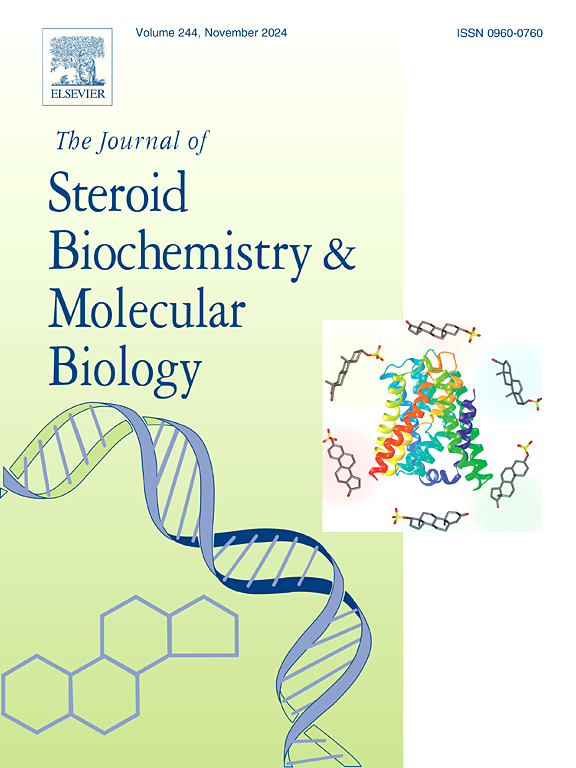A comprehensive perspective on the role of vitamin D signaling in maintaining bone homeostasis: Lessons from animal models
IF 2.5
2区 生物学
Q3 BIOCHEMISTRY & MOLECULAR BIOLOGY
Journal of Steroid Biochemistry and Molecular Biology
Pub Date : 2025-03-22
DOI:10.1016/j.jsbmb.2025.106732
引用次数: 0
Abstract
1,25(OH)2D3 is well known for its role in maintaining normal serum calcium levels. Through its receptor, 1,25(OH)2D3 enhances intestinal calcium absorption and renal calcium reabsorption, thereby ensuring serum calcium levels are within physiological range, which is in turn important for normal bone development and mineralization. The vitamin D receptor (VDR) achieves this via transcriptional induction of genes important in calcium transport. When intestinal and renal calcium (re)absorption is impaired, VDR-mediated signaling will stimulate bone resorption and inhibit mineralization in order to maintain normal serum calcium levels, as evidenced in mice with a systemic or intestine-specific deletion of the VDR. However, VDR signaling in bone is also reported to have anabolic effects. In this review we will discuss the effects of 1,25(OH)2D3-mediated VDR signaling on bone homeostasis and provide an overview of the in vitro experiments and various transgenic mice models that have been generated to unravel the role of VDR signaling in different bone cell types such as chondrocytes, (pre)osteoblasts, osteocytes, and (pre)osteoclasts.
维生素D信号在维持骨稳态中的作用的综合视角:来自动物模型的教训。
1,25(OH)2D3在维持正常血钙水平方面的作用是众所周知的。1,25(OH)2D3通过其受体增强肠道钙吸收和肾脏钙再吸收,从而确保血清钙水平在生理范围内,这反过来对正常骨发育和矿化很重要。维生素D受体(VDR)通过对钙运输中重要基因的转录诱导来实现这一功能。当肠道和肾脏钙(re)吸收受损时,VDR介导的信号会刺激骨吸收并抑制矿化,以维持正常的血清钙水平,这在VDR系统性或肠道特异性缺失的小鼠中得到了证明。然而,据报道,骨中的VDR信号也具有合成代谢作用。在这篇综述中,我们将讨论1,25(OH) 2d3介导的VDR信号对骨稳态的影响,并概述体外实验和各种转基因小鼠模型,以揭示VDR信号在不同骨细胞类型(如软骨细胞、(前)成骨细胞、骨细胞和(前)破骨细胞)中的作用。
本文章由计算机程序翻译,如有差异,请以英文原文为准。
求助全文
约1分钟内获得全文
求助全文
来源期刊
CiteScore
8.60
自引率
2.40%
发文量
113
审稿时长
46 days
期刊介绍:
The Journal of Steroid Biochemistry and Molecular Biology is devoted to new experimental and theoretical developments in areas related to steroids including vitamin D, lipids and their metabolomics. The Journal publishes a variety of contributions, including original articles, general and focused reviews, and rapid communications (brief articles of particular interest and clear novelty). Selected cutting-edge topics will be addressed in Special Issues managed by Guest Editors. Special Issues will contain both commissioned reviews and original research papers to provide comprehensive coverage of specific topics, and all submissions will undergo rigorous peer-review prior to publication.

 求助内容:
求助内容: 应助结果提醒方式:
应助结果提醒方式:


